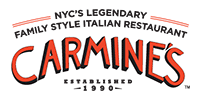Radical/Networks
October 24-25, 2015
Integrated Digital Media
MAGNET NYU Poly, Brooklyn, NY
Miki Foster

Miki Foster is an artist based in Brooklyn, New York. Her work centers around themes of queer precarity, exploding gender binaries, exploring radical histories/mythologies and performing critical new media education. Through video art, electronic installation, textile fabrication and game design Miki's work considers the interplay of power and technological production, poetry and the abject political site of the body. A dedicated educator Miki has over twelve years of experience teaching in art and technology programs to young people and adults with a mindfulness towards producing challenging interdisciplinary experiences. Miki earned an MFA degree in Digital Arts/New Media from the University of California Santa Cruz in 2009. Miki's educational work with Daniela Rosner, Woven Futures, is featured in the MIT Press book DIY Citizenship (2014).
Presenting with Erica Kermani
The Queer Red Phone: Designing Interfaces and Community Accountability Networks Through Mesh
The idea of a batphone - the red phone that Commissioner Gordon had a secure line with Batman - is that the user has a secure connection used in critical situations or emergencies. One of the interesting possibilities of a closed network coupled with a bit of cryptography and an alert system is that we can create a means for designing a user experience that is easy to access, can serve multiple critical functions within our communities and is built/maintained from the ground up by members of the community who are committed to the privacy and anonymity of all users.
Let’s say that we wanted to distribute the responsibility of responding to a critical situation or emergency to not just one person or a bunch of people. We can send out the equivalent of a bat signal - we can encode a message that gives more specifics that allows respondents to prepare for the situation and engage with each other (if needed) in order to strategize. The question is can we build a network that uses grassroots organizing, trust and accountability structures to create a digital framework/community that addresses emergencies, critical situations, and distributes care and resources within our communities without (or at least minimizing) surveillance? What would this network enable us to do and how would we encourage others to use it without compromising its integrity?
In this workshop we will imagine and design as a community of queers a network and community. Participants need not know anything about mesh networks in order to attend but rather come with a willingness/openness to think about both the social and technical limitations/possibilities of creating a community.
Materials: paper, post-its, markers, pens (no tech materials)





